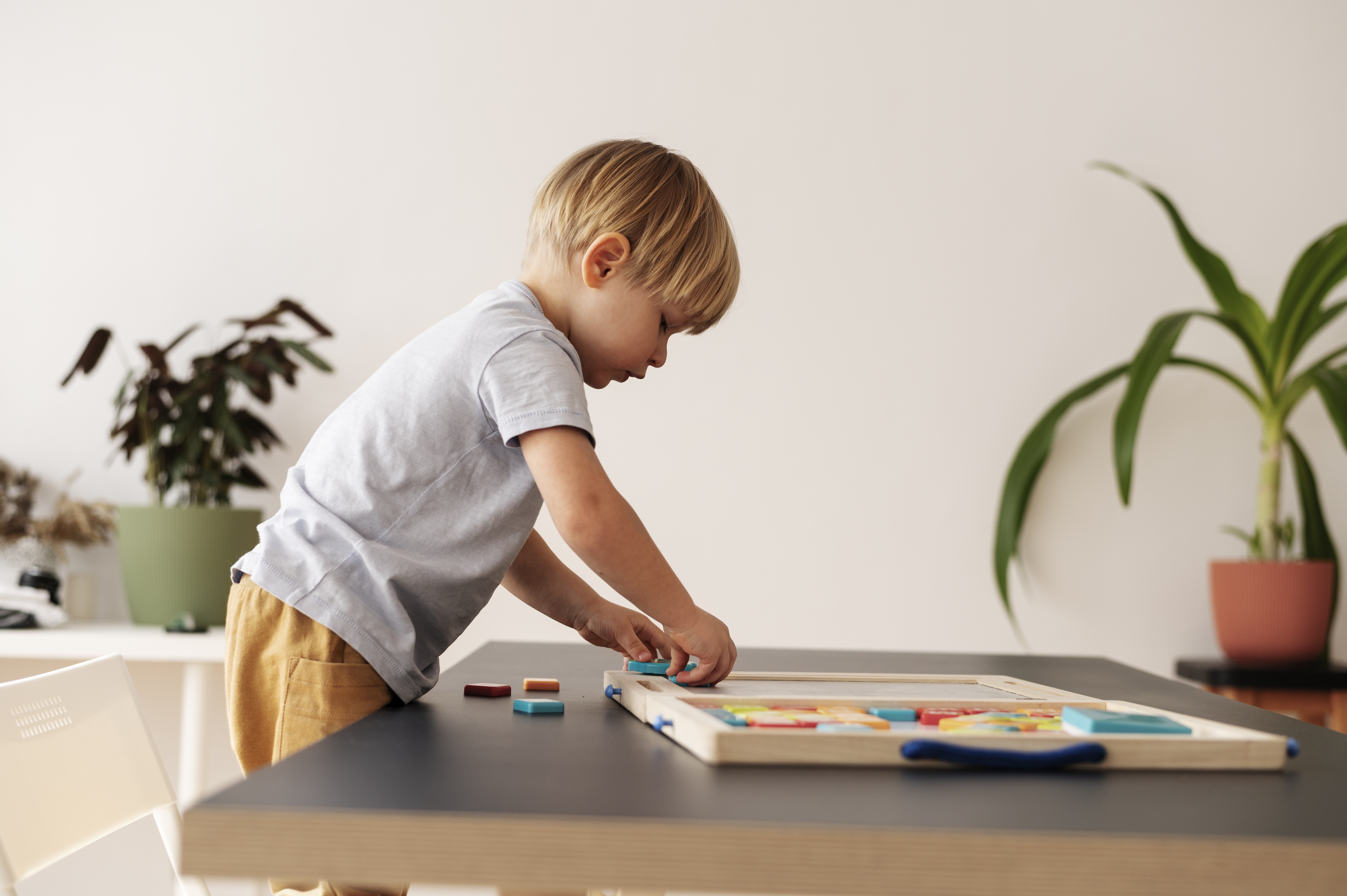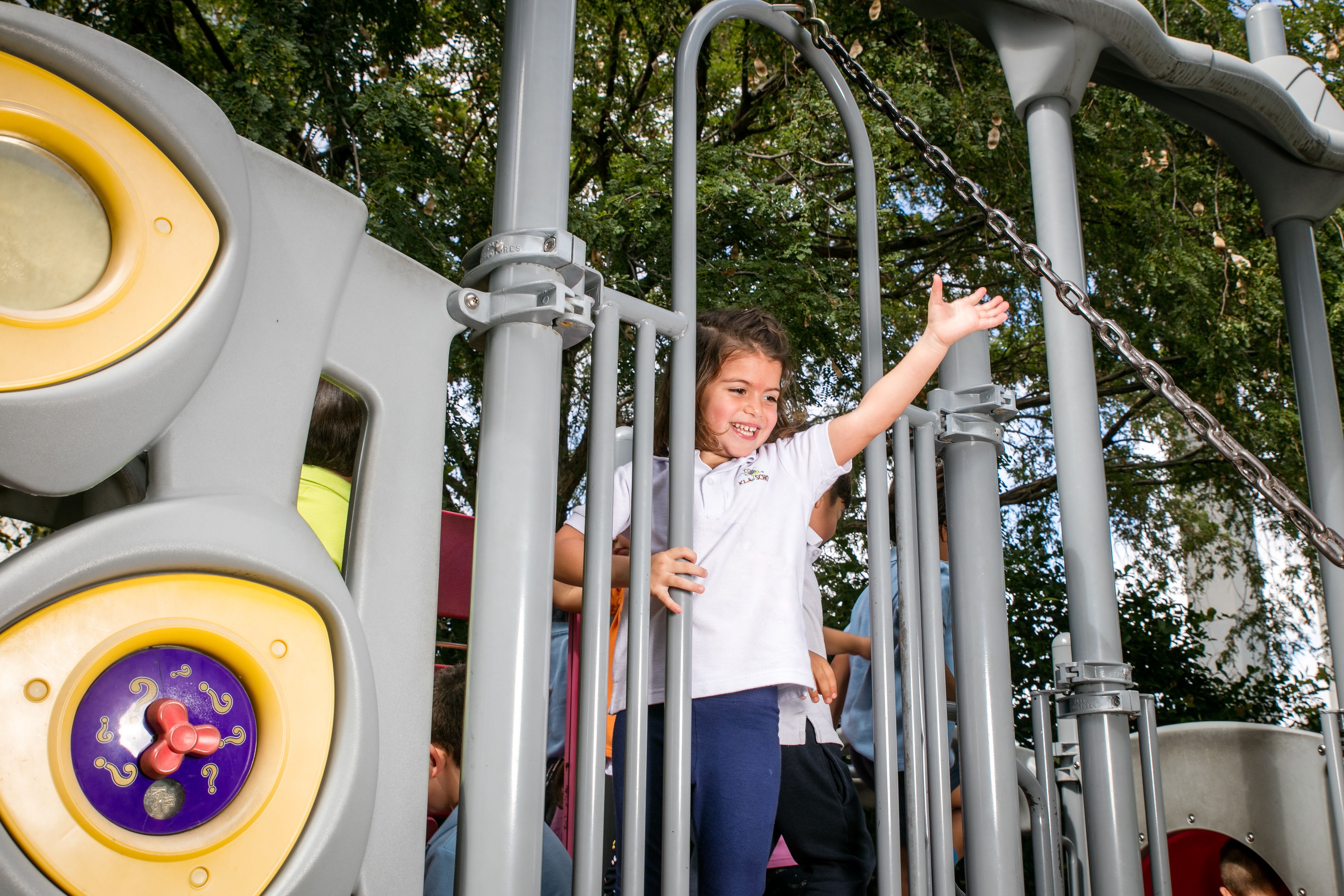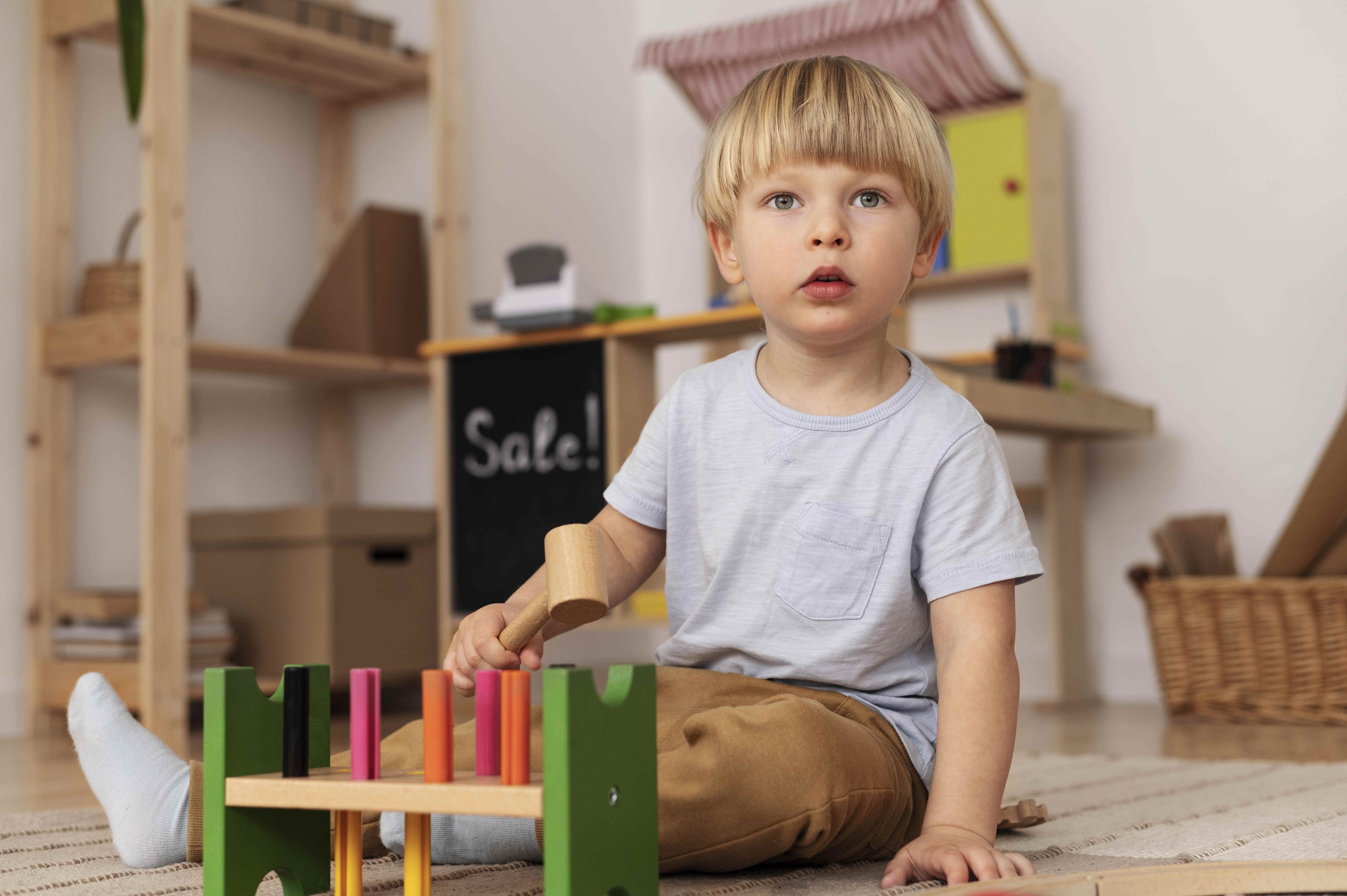Child-Led Learning: Interest-Based Education For 2-Year-Olds
Topics: Child Development
Age Range: Preschool
Every child is born with a sense of wonder and an eagerness to explore. At KLA Schools, we honor that curiosity through child-led learning—an approach rooted in the Reggio Emilia philosophy that supports meaningful growth as early as age two.
But what exactly is child-led learning, and how does it benefit toddlers? Let’s explore how this approach supports early development and creates meaningful learning opportunities, and why it's a key component of KLA Schools' educational philosophy.
What Is Child-Led Learning?
Child-led learning, or child-directed learning, is an approach in which the child’s interests and curiosities shape the learning experience. Instead of following a standardized curriculum, educators act as observers and guides, allowing the child to take the lead in what they want to explore and learn.
At its core, child-led learning recognizes that children are capable, competent individuals who are naturally driven to understand the world around them. When we follow a child’s lead, learning becomes an engaging, personalized journey where the child is an active participant, not a passive recipient.
This method is compelling in early childhood, where young learners are forming the building blocks of lifelong attitudes toward education. For a 2-year-old, who is just beginning to explore their autonomy, child-led learning environments provide the ideal setting for discovery and development.
Why Child-Led Learning Is Ideal for 2-Year-Olds
Two-year-olds are at a pivotal developmental stage. They’re becoming more mobile, verbal, and independent. They begin expressing preferences, exploring boundaries, and asking questions about the world around them, often without even needing words.
This natural sense of wonder makes child-led learning especially effective at this age. Rather than imposing rigid expectations or timelines, this approach adapts to the individual child’s developmental readiness, allowing them to learn in meaningful and enjoyable ways.
Key Reasons It Works:
- Natural curiosity: 2-year-olds are eager to explore. Child-led learning encourages their innate drive to touch, taste, smell, and experience.
- Emotional growth: Toddlers begin to express a broader range of emotions. Learning that follows their interests supports emotional regulation and confidence.
- Developmental milestones: From motor skills to language, child-led activities help build essential skills organically.
- Foundation for autonomy: Offering choice at a young age helps toddlers feel empowered, building decision-making and self-awareness.
At KLA Schools, our educators observe children closely, listening for their verbal and nonverbal cues to understand their interests. They then use these observations to plan experiences that deepen engagement and reinforce learning.
Interest-Based Activities for 2-Year-Olds
One key component of child-led learning is interest-based activities—hands-on experiences that align with what naturally captures a child’s attention. These activities are not only fun but also powerful tools for developmental growth.
For 2-year-olds, interests often shift quickly, and that’s completely normal. Our educators at KLA Schools remain flexible and observant, using each spark of curiosity as an opportunity to create rich, meaningful learning moments.
Examples of Interest-Based Activities:
- Animal exploration: If a child shows interest in animals, teachers might introduce books, songs, or art projects related to their favorite creatures. A classroom "zoo" with stuffed animals can lead to imaginative play and conversations about habitats, sounds, and behaviors.
- Building and construction: Children drawn to stacking blocks or playing with loose parts can explore basic engineering and math concepts. Teachers might add cardboard tubes, wooden planks, or sensory sand to expand the play.
- Art and color play: A fascination with colors can evolve into experiments with finger painting, color mixing, or nature-based art using leaves and flowers.
- Movement and music: Some toddlers express themselves best through movement. Teachers may organize dance parties, rhythm games, or obstacle courses to encourage gross motor development and self-expression.
- Water and sensory play: When children are curious about pouring, splashing, or scooping, educators set up water tables or sensory bins filled with rice, beans, or safe household materials—perfect for developing fine motor skills and understanding cause and effect.
These interest-based activities are intentionally open-ended, allowing children to explore without a “right” or “wrong” outcome. This helps them build confidence, practice decision-making, and stay motivated to learn.
At KLA Schools, interest-based learning isn’t about filling time—it’s about fueling imagination and growth with purposeful, child-centered engagement.
How Child-Directed Learning Looks in Practice
In a child-directed learning environment, the classroom becomes a “third teacher.” The physical space is designed with intention, inviting children to explore materials, collaborate with peers, and engage in open-ended activities.
Here’s an example of how this might look with 2-year-olds:
- A child shows interest in water during outdoor play. A teacher observes and creates a sensory station with funnels, cups, and floating toys to extend the experience.
- Another child is fascinated by bugs. The class goes on a nature walk to observe insects, followed by drawing, storytelling, and science discussions—all stemming from that child’s initial interest.
- A small group starts stacking blocks. Educators introduce new shapes and materials, adding vocabulary like “tall,” “wobbly,” or “balanced” to support language and math skills.
In each scenario, the child initiates the learning, which the teacher supports. It’s not about letting toddlers “do whatever they want,” but rather about co-constructing learning to honor their voice and agency.
Designing Effective Child-Led Learning Environments
Creating a thriving child-led learning environment means more than just providing toys and materials—it means crafting a thoughtful, responsive space where children feel safe, inspired, and capable.
At KLA Schools, our classrooms are designed to:
- Be open and flexible, allowing children to move freely and make choices.
- Use natural and sensory-rich materials that invite exploration and stimulate creativity.
- Include visual documentation, such as photos and artwork, to reflect each child’s learning journey.
- Feature age-appropriate learning areas like dramatic play corners, art stations, construction zones, and cozy reading nooks.
In these environments, educators act as researchers and collaborators. They ask open-ended questions, offer gentle guidance, and document progress to ensure each child is challenged and supported.

The Long-Term Benefits of Child-Led Learning
The benefits of child-led learning extend far beyond the toddler years. Research shows that when children actively participate in their learning, they develop deeper cognitive and social-emotional skills.
Benefits Include:
- Stronger critical thinking: Children learn to solve problems independently and think creatively.
- Improved language development: Conversations around interests boost vocabulary and communication skills.
- Higher engagement: When children care about what they’re doing, they are more focused and persistent.
- Increased confidence: Being listened to and taken seriously builds self-esteem and trust.
- Intrinsic motivation: Children learn for the joy of it, not for rewards or praise.
These skills are essential for academic success and prepare children for life, helping them become confident, compassionate, and adaptable adults.
How KLA Schools Champions Child-Led Learning
At KLA Schools, child-led learning isn’t a trend—it’s a fundamental philosophy rooted in the Reggio Emilia approach. The school community believes that children can construct knowledge and that meaningful learning happens when adults listen, support, and inspire. This is especially true in our preschool program for 2-year-olds, where curiosity is honored, independence is encouraged, and each child’s unique voice guides the learning journey."
Here’s how KLA Schools brings child-directed learning to life:
- Educators as researchers: Teachers observe closely, document thoughtfully, and adapt their teaching to each child’s interests and needs.
- Parent collaboration: Families are viewed as partners in education, with frequent communication and involvement in their child’s learning journey.
- Dynamic curriculum: Rather than rigid lesson plans, our Reggio Emilia-inspired curriculum emerges from classroom observations, evolving as children grow and explore.
- Respect for each child: Every child’s voice matters. Their interests, ideas, and experiences are valued and celebrated.
This approach leads to more joyful, confident learners—children excited to come to school because they know their ideas will be heard and their passions explored.
Nurturing Lifelong Learners Through Child-Led Exploration
Child-led learning empowers children to become curious, confident, and capable from the beginning of their educational journey. For 2-year-olds, it offers the ideal balance of structure and freedom, helping them grow cognitively, socially, and emotionally naturally and joyfully.
At KLA Schools, this approach is not just a method—it’s a mindset. Rooted in the Reggio Emilia philosophy, every classroom experience is thoughtfully designed to honor each child’s individuality and potential. Children at KLA learn about the world by following their natural interests and discovering who they are.
Want to see how child-directed learning can shape your child’s future?
Schedule a tour now to see how KLA Schools nurtures meaningful, interest-based learning from the start.

